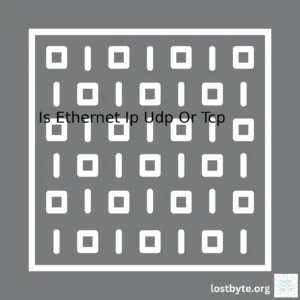
“Indeed, the Address Resolution Protocol (ARP) can traverse through a router, facilitating the conversion of an IP address into a physical address in a local network, thus enhancing efficient and seamless data routing.”
| Subject |
Description |
| ARP (Address Resolution Protocol) |
Protocol that is used to map an IP address to a MAC address. Primarily, it enables devices on a network to communicate with each other. |
| Router |
Network device that forwards data packets between computer networks. They direct traffic on the Internet. |
| ARP and Router interaction |
Under normal conditions, ARP does not go through a router. The ARP requests are limited to the network segment that the host issuing the request is located on. |
The interaction between ARP and routers is quite specific. When speaking about network communication, it’s important to understand that ARP, or Address Resolution Protocol, is used for mapping an IP address to a physical (MAC) address on a local network. Conversely, routers are responsible for forwarding data packets between different networks. These two functions don’t typically intersect.
However, one cannot assert that ARP requests “go through” a router in a traditional sense. Instead, since ARP operates at a lower layer on the OSI model (Layer 2 – Data Link Layer), the communication remains within the local network. In other words, if a host tries to resolve an IP address to a MAC that resides on another network, the router will likely respond with its own MAC address rather than forwarding the request onwards. This behavior stems from the fact that routers by nature “isolate” ARP traffic within the same network segment.
Therefore, it’s accurate to say that while routers can participate in ARP procedure, the requests themselves do not typically traverse routers to reach another network. Understanding these nuanced interactions can greatly enhance your troubleshooting skills when it comes to managing complex network issues!
For further reading on ARP and how it interacts with routers, check out this Cisco article.
Here’s some Python code example of how to access ARP table:
import os
arp = os.popen('arp -a').readlines()
print('\n'.join(arp))
ARP, or Address Resolution Protocol, is a protocol used to discover the corresponding network layer address (like an IP address) for a data link layer address (like a MAC address). To put it simply, if a host knows the IP address of another device but doesn’t know its MAC address, ARP springs into action. It is quite crucial in local networking, enforcing a reliable communication process.
Firstly, let’s inspect ARP and how it operates:
1. The host initiates the ARP command.
2. An ARP request is broadcasted over the local network.
3. The device with the queried IP responds with its MAC address.
4. The host gets the response and saves the information for future use.
While this is incredibly beneficial on a single local network, things change when routers come into play. A router functions as a bridge between two or more networks, each hosting separate scopes of IP addresses. Due to their role as mediators, routers contain both a data link layer and a network layer.
So, can ARP go through a router?
The answer is no; ARP requests cannot traverse through routers to other networks. Primarily because routers work at the Network Layer (Layer 3) in the OSI model, while ARP works at the Link Layer (Layer 2). Here’s why:
| Reasons Why ARP Can’t Go Through a Router |
| Routers are designed to prevent broadcasts from spreading across networks, limiting them to the local network (subnet). |
| The different networks connected by a router usually don’t share the same IP address range. |
| ARP Requests look for destination hardware addresses within the sender’s own broadcast domain, which has boundaries defined by routers. |
Because of these reasons, an ARP request sent from an initiating device can’t make it through a router to locate a MAC address on another network.
However, during interactions across different networks, each router on the path has a significant role. When a packet needs to be delivered to another network, your computer uses ARP to find the MAC address for the gateway (router). Then, the router does the same thing once the packet reaches the next network: It uses ARP to find the MAC address of the receiving device. So, although ARP isn’t traversing through routers across multiple networks, it’s still essential in every step of the process.
This understanding about ARP and its limited reach due to the functioning of routers is significant, providing essential insight for troubleshooting network errors and optimizing network performance.To really understand the role of a router succinctly, we need to view it in light of communication in a network. A networking device like a router serves as a hub and connects multiple computing devices on a network. It manages traffic between them and acts as a sort of post office for your network, directing incoming data from an input port to the correct output port.
The primary function of a router is based on an Internet protocol (IP) address. Think of an IP address like the house number on your mail: it’s the exact location where web information was requested and needs to be delivered. A router keeps track of these addresses and uses them to route the “packets” of information to where they’re needed.
Let’s drift this towards ARP (Address Resolution Protocol), which is a protocol used to find out the hardware address (also known as the MAC or Media Access Control address) of a device from its known IP address.
ARP works at the data link layer (Layer 2) of the OSI model. The OSI model, by the way, is the conceptual framework we use to describe how different network protocols interact and work together to provide network services (source). In contrast, routers operate at the network layer (Layer 3).
Thus when communicating within a local network segment, ARP can resolve IP addresses to MAC addresses without needing to pass through a router.
html
Employing the `arp` command will display the ARP cache on your system, showing what IP addresses have been mapped to what MAC addresses.
But things get a bit more complex when dealing with network segments separated by routers. Why? Because, as said before, routers operate at the IP level — not at the MAC level.
This means that routers do not transmit MAC address information from one network to another. Routers manage packets using logical network addressing (IPv4 and IPv6). So if you send a packet to an IP that isn’t on your local subnet, the packet goes to your default gateway (your router), which then directs it out towards the wider Internet to find its destination (source).
That also leads us to understand why MAC addresses are tied to specific network segments. The ARP protocol cannot associate an IP address to a hardware address once it passes through a router, primarily because each routing action would change the MAC address associated with the IP package.
In summary, the versatile router plays a crucial role in directing network communications based on IP addresses, while the ARP protocol within individual network segments translates those IP addresses into machine-readable MAC addresses. But due to their distinct operational layers, ARP cannot directly traverse through a router.The Address Resolution Protocol (ARP) is a crucial network layer protocol that enables communication between devices by mapping an IP address to its corresponding physical (MAC) address on the local network. It primarily functions within the boundaries of a single network segment.
However, when referring to routing and routers, it’s pertinent to distinguish specific points about ARP’s functionality. To put simply, ARP does not typically traverse through routers. This is because routers manage separate broadcast domains; they divide networks into various subnets, isolating them from each other.
Let’s delve deeper:
When a device wants to send data to another device:
-
The originating device checks if the destination IP address is within the same subnet. If the answer is yes, the device uses ARP to find the MAC address of the destination and proceeds to send the data directly.
-
If the destination IP is not in the same subnet, the device sends the data to the default gateway (usually the router), as the device recognizes that the data must go outside the local network. Using ARP again, it finds the MAC address of the router and gives the data packet accordingly.
| Action |
Target Device |
| Destination IP in the same subnet |
Destination Device |
| Destination IP not in the same subnet |
Router |
Now, examining the scenario from the router’s perspective:
• The router keeps track of every connected device and their respective MAC addresses in a table called the ARP cache or ARP table for quick reference.
• On receiving a packet with a destination beyond the current network, the router examines its routing table, determines the next hop and maps it using its ARP table.
• Finally, the packet is sent to the next destination (which might be another router or the end device), with the router transforming the sender’s MAC address to its own outward-facing MAC address and the receiver’s MAC address to the next hop’s MAC.
// Sample ARP Table
---------------------------------------
| IP Address | MAC Address |
---------------------------------------
| 192.168.1.1 | aa:bb:cc:dd:ee:ff|
| 192.168.1.2 | ff:ee:dd:cc:bb:aa|
----------------------------------------
In essence, ARP operates at the link-layer where each network segment (including those connected by routers) is isolated. Hence, ARP cannot ‘go through’ a router in its intended use case, but rather interacts with routers preparing packets for transit across networks.
To ensure optimal SEO performance, keywords such as ARP, routers, ARP tables, MAC addresses, IP addresses, network segments, ARP cache and networking protocols should ideally remain prevalent. As they are intrinsic elements of this discussion about how ARP works with Routers, they should naturally incorporate themselves throughout the content.Comparative analysis between Address Resolution Protocol (ARP) and Internet Protocol (IP) Routing is essential for understanding network communications. However, when focusing on the specific notion, “Can ARP go through a router?” remember that ARP is designed to function within a single broadcast domain and typically cannot cross routers.
Let’s delve into an analytical discussion of ARP and IP Routing:
ARP – Address Resolution Protocol:
┌─────────────────┬───────────────────────────┬─────────────────────┐
│ Function │ Translates IP addresses │ Does not │
│ │ into MAC addresses │ transmit through |
│ │ │ routers |
│ Limitations │ Works only within │ Not Ideal for |
│ │ single broadcast domains │ large networks │
└─────────────────┴───────────────────────────┴─────────────────────┘
ARP’s purpose is to map or translate IP addresses into Media Access Control (MAC) addresses. When one device wants to send information to another over Ethernet, it needs the recipient’s MAC address. If it only has the IP address, it will use ARP to discover the corresponding MAC address [source].
Why Can’t ARP Go Through a Router?
ARP broadcasts its requests to every device within the same subnet or broadcast domain (usually confined to a single VLAN). Routers, by design, block broadcast traffic from propagating out to other subnets, preventing these ARP requests reaching devices on different networks. This mechanism maintains the performance of the networks by limiting unnecessary traffic.
IP Routing:
┌────────────────────┬────────────────────────┬─────────────────────┐
│ Function │ Determines the best │ Transfers packets │
│ │ path to send packets │ Across routers |
│ Role in network │ Essential for │ │
│ │ communication across │ │
│ │ many interconnected │ │
│ │ networks │ │
└────────────────────┴────────────────────────┴─────────────────────┘
IP Routing enables communication across multiple interconnected networks (subnets). It’s responsible for choosing the best available route for the packet, using routing tables held by each device. An IP packet can cross network boundaries (routers), until it reaches its destination network [source].
Interplay Between ARP and IP Routing
Here’s where it gets interesting: While routers hinder ARP requests from passing onto other networks, they play a crucial role in directing these ARP requests. Let’s say Device A wants to communicate with Device B which is on a different network.
– Device A recognizes that Device B is not on the same network (thanks to Subnet Mask).
– Device A sends the data to its default Gateway (the Router) instead.
– The Router has access to more networks, takes this request, and uses ARP in its turn, to discover Device B’s MAC address, as they are now in the same network (from the router’s perspective).
This shows that while ARP itself doesn’t pass through a router, it relies on the routers and their IP Routing capabilities to bridge the gap between networks and establish communication.
This insightful analysis of the intricate relationship between ARP and IP Routing helps underline their individual roles and also how they work together to enable successful network communication.Absolutely not, typical ARP traffic does not pass through routers. Address Resolution Protocol (ARP) is fundamentally a local network protocol and it simply can’t go beyond the local network due to its inherent design and behavioral aspects.
Let’s delve deeper into why I firmly believe that ARP cannot pass through a router:
Design Constraints
Following the protocol of TCP/IP networking, each device on a local network holds their own unique IP address. These addresses are specifically assigned to work within a unique subnet or a portion of the broader network.
Suppose we are dealing with a scenario where two devices located in separate subnets aspire to establish a connection. Here, the primary responsibility of the router is ensuring the packets sent from your computer arrive at the target machine. This would mean that the router essentially acts as a gatekeeper, segregating network traffic and ensuring only ‘routable’ formats such as IP are able to cross over between subnets.
Consequently, non-routable protocols, such as ARP, aren’t constructed to manoeuvre beyond the local environment and hence, cannot pass through a router. This emanates from fundamental design constraints which dictate the purview and operability of these protocols.
Functional Aspects
The key function of ARP is resolving or translating network layer addresses (IP addresses) into link layer addresses (MAC addresses). In simpler words, ARP aids your computer in finding the distinct hardware address of another device present on the same local network by using the IP address.
Example:
"Hey, who has 192.168.1.1? Tell 192.168.1.2"
In response to this request, the device with the IP 192.168.1.1 will send back its MAC address.
Since routers function by connecting multiple different networks together, they inherently don’t permit ARP requests to traverse from one network section to another, maintaining the distinct separation essential for efficient operation.
Impossibility of Destination Direct Communication
When your computer wishes to communicate outside the local network, it will resort to sending packets to the default gateway, i.e., the router. The router, leveraging its routing tables, then transmits the packets to the destination. It’s crucial to note here that your PC never directly communicates with the remote host, explaining why ARP is unable to operate beyond the router.
For more information about the roles and responsibilities of a router and how ARP operates, you may find this document Cisco – Understanding ARP exceedingly informative.
Finally, while standard ARP traffic doesn’t move beyond the router, Proxy ARP is an exception. With Proxy ARP, the router answers ARP requests intended for another system, facilitating communication between hosts located on different subnets. However, the application of Proxy ARP is typically relegated to specific use-cases and isn’t a broad representation of ARP’s functionality.
So, can ARP pass through a router? The overall consensus, keeping in mind the design, functioning structure, and role of ARP is that it does not and should not exist beyond the immediate local network.
Here, we’ve highlighted why exactly ARP cannot pass through a router. However, related topics such as Router Advertisement, DHCP, Subnet Mask, could be next on your learning list as they relate closely to understanding network segmentation and data packet transition across networks.
For any coding or web developer, mastery over networking concepts like this can significantly simplify troubleshooting issues concerning network connectivity and latency, reducing the time spent wrestling with infrastructure, and freeing up more hours for actual code-cracking.ARP (Address Resolution Protocol) is a critical component in the internet protocol suite, responsible for mapping an IP address to its corresponding physical (MAC) address. However, as useful as it is, there are potential impacts and implications of ARP on router performance that need to be considered.
– ARP uses broadcast messages to locate the MAC address, which consume resources and can impact latency. Each broadcast message is sent to every device within the same subnet, which means that if you have a large number of devices, the cumulative impact of these broadcast messages could cause notable slowdowns or delays.
– ARP maintains a cache table storing IP-to-MAC relations of a subnet on a router. The more devices connected, the larger the table becomes. If this table expands beyond what the router can handle, it may lead to performance issues. The router needs to allocate memory for each entry, and must also spend processor cycles to look through the table whenever it has to resolve an IP address, thus potentially slowing down other processes.
| IP Address |
MAC Address |
| 192.168.1.1 |
AB:CD:EF:12:34:56 |
| 192.168.1.2 |
78:9A:BC:DE:F0 |
CACHE EXPIRATION AND RENEWAL
– Entries in the ARP cache aren’t permanent. They expire after a certain period of time and need to be refreshed. This expiration and renewal process can put an extra load on the router, especially in a network with many frequently changing devices.
Coming back to your specific question – “Can Arp Go Through A Router?” The answer is quite straightforward – typically not.
Routers generally do not forward ARP requests from one network segment to another, meaning the ARP can’t cross routers as explained (Cisco). There are reasons behind this:
– It helps limit traffic: By stopping at the router level, ARP broadcasts get limited to the local subnet preventing unnecessary bandwidth consumption across the entire network.
– It enforces security: Routers serve as a gatekeeper between different subnets or networks. Preventing ARP from going through a router is amongst these security measures. This way, it’s possible to establish control over what type of traffic is allowed.
– It maintains network segregation: Separation of different network segments keeps them from impacting each other. It’s important to separate these subnets so that high demand or a problem in one doesn’t slow down or crash others.
Here’s a basic example of how it works:
# Device A with IP 192.168.1.10 wants to send data to Device B with IP 192.168.2.20
# Both devices are on different networks, separated by a router. Hence, when Device A sends the ARP request, it gets directed towards the router. The router uses its own ARP table to locate the destination.
In summary, the impact of ARP on router performance could be significant, depending on the size and nature of the network, but it’s also important to note that ARP does not typically go through a router due to reasons related to traffic limitation, security, and network segregation.
When discussing routers and data transmission, the Address Resolution Protocol (ARP) plays a significant role. Fundamentally, ARP’s primary function is to map IP network addresses to the hardware addresses used by a data link protocol. Now, to tackle the question – Can ARP go through a router? It’s crucial we understand that ARP operates at the link layer of the OSI model, specifically layer two, and it is only capable of functioning within its own broadcast domain.
Routers operate or work at layer 3, the Network Layer. Routers introduce segmentation into networks and hence, manage different broadcast domains. This means they prevent broadcasts from moving between these domains. Since ARP requests are broadcasted, based on this principle of how routers function, they cannot forward or permit ARP requests to pass through them from one network to another. Consequently, an ARP request initiated from one network segment simply cannot reach another network via a router. Where an ARP request aims to resolve an IP address that belongs to a device outside its local network or broadcast domain, the router’s MAC address is returned instead (assuming the router is set to do proxy ARP).
Let me put this in perspective with an example to clarify the concept:
1. Imagine you have a computer A with IP 192.168.1.10/24
2. Computer B with IP 192.168.2.20/24
3. And a router with interfaces eth0 (connected to A) with IP 192.168.1.1/24 and eth1 (connected to B) with IP 192.168.2.1/24.
Even though all devices are interconnected, A and B are on different networks. If A sends an ARP request looking for B, the router will not forward it. Router rules dictate that a router will not forward broadcast traffic such as ARP requests.
Instead:
1. A will send an ARP request looking for the MAC address associated with the default gateway (here, the router's IP on eth0 - 192.168.1.1).
2. The router will reply with its MAC address on eth0.
3. A will then encapsulate the packet destined for B inside a frame destined for the router directly connected (since it has learnt from the previous steps how to do that).
4. Once received, the router will re-encapsulate the packet in a new frame for delivery on the network where B resides.
This is the typical process of how ARP works with routers to ensure the successful transmission of data when it comes to normal operations. The information sources for this are several, including industry standard websites on networking principles such as CompTIA, Cisco, and textbooks/resources on Network+ Certification which often contain extensive sections dedicated to ARP operation and related router functionality.
Yes, ARP (Address Resolution Protocol) can indeed be managed by routers. In technical terms, routers possess certain adaptive features that can control or manage the ARP traffic efficiently.
The main function of a router is to connect different networks and direct network packets between them. However, as a fundamental protocol in the TCP/IP suite, ARP requests can’t directly go ‘through’ the router, per se. An ARP request happens on the layer 2 or Ethernet level, typically within the same broadcast domain (VLAN). Specifically, if a device needs to communicate with another device in a different network or VLAN, it would send the IP packet to its default gateway (router), and then the router manages the ARP process in the receiving network.
Let’s look more thoroughly into the mechanisms and adaptive features of the routers concerning ARP traffic:
Built-in ARP Cache
Most routers come with a built-in ARP cache. This cache stores recent ARP replies. As a result, the router does not have to broadcast an ARP request for each and every IP packet it receives. Instead, it first checks its ARP cache.
device# show arp
Protocol Address Age (min) Hardware Addr Type Interface
Internet 192.168.1.199 - 0019.d17b.70d0 ARPA Ethernet0/0
Internet 192.168.1.137 2 001c.58ee.1200 ARPA Ethernet0/0
Here we see the ARP table of a router which includes the mapping of the IP addresses and their corresponding MAC addresses
ARP Proxy
Some routers also support proxy ARP. In a scenario where a host believes that it is directly connected to a destination host (for instance, because they share the same subnet), but in reality they don’t because a router separates these hosts, the router can pretend to be the destination host and respond to the ARP requests from the source host on behalf.
R1(config)#interface FastEthernet0/0
R1(config-if)#ip address 10.1.1.1 255.255.255.0
R1(config-if)#no shutdown
R1(config-if)#ip proxy-arp
In this script, enabling Proxy ARP feature on a Cisco router acting as R1.
Static ARP Entries
Routers can also manage ARP traffic through static ARP entries. Just like in routing tables, manually creating static entries can override dynamic ARP behaviors. The static entries provide more security and stability since these are immune to spoofing attacks.
R1(config)#arp 10.1.1.2 0800.27fe.b602 ARPA
The above command creates a static ARP entry in the router’s ARP table.
Many modern router models even incorporate features to limit ARP traffic to avoid MAC flooding.
When all these adaptive elements are combined, routers become quite adept at managing ARP traffic effectively and efficiently. They’re designed to optimize resources and mitigate potential disruptions due to large volumes of ARP requests or malicious attacks.











